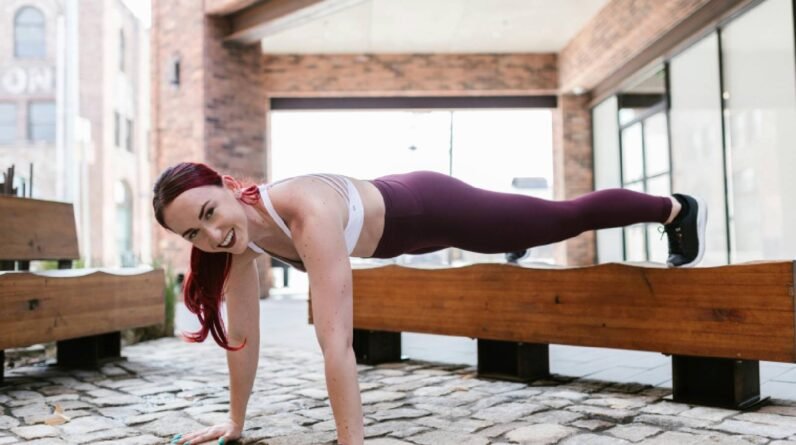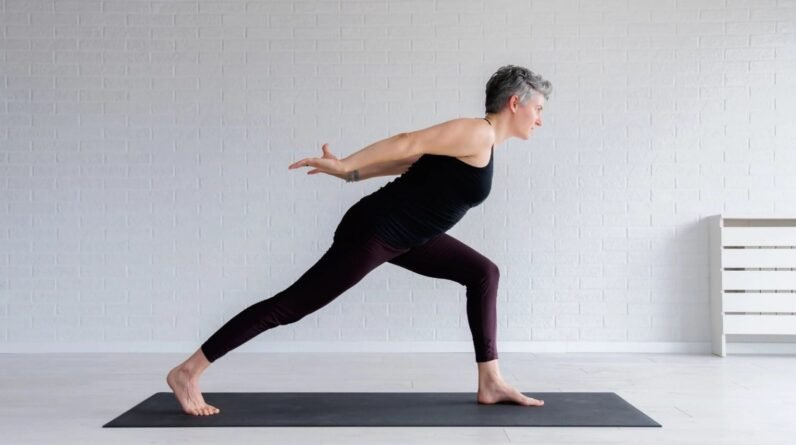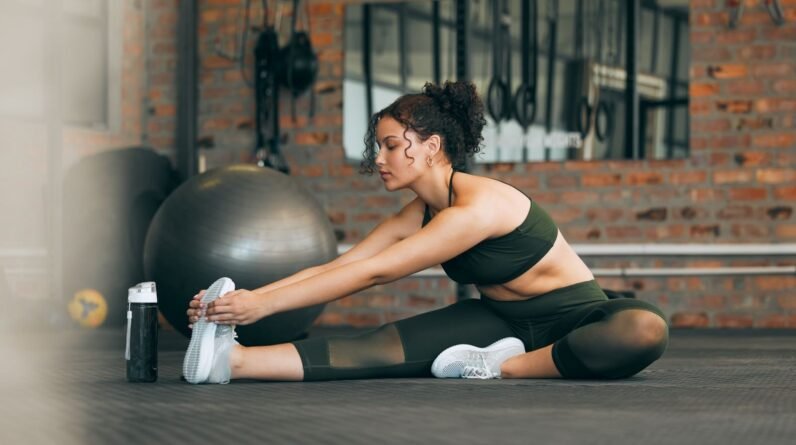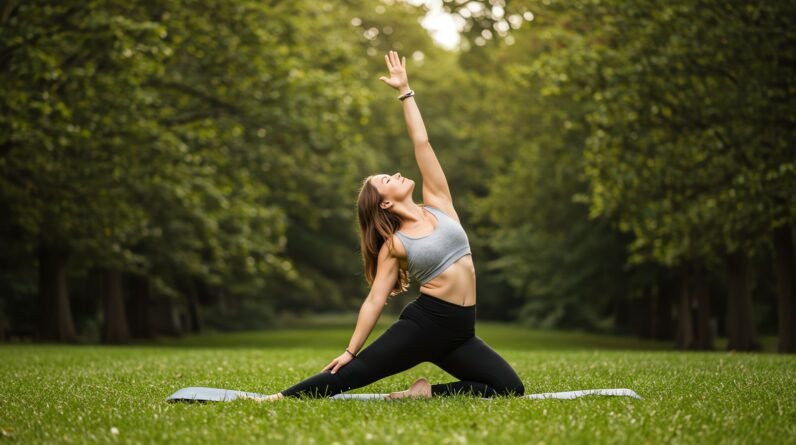
Functional fitness training is a group of exercises that mimic real-life movements. These help build strength, mobility, and flexibility.
Besides weight loss, what it we told you that there is a workout which makes it easier for you to do daily tasks, such as lifting groceries or climbing stairs? That’s functional fitness training for you. The exercise regime that is part of the workout mimics real-life movements and works to improve strength, balance, flexibility, and endurance. This workout and its exercises focus on multiple muscle groups at the same time, and what you get is a full-body workout. Not only is it great for your core strength, but it also reduces the risk of injuries. Wondering how to get started? Let’s find out.
What is functional fitness training?
Functional fitness training involves exercises that prepare your body for real-life movements that you might do at home, at work, or in sports. “It combines exercises that engage multiple muscle groups with various elements of strength, endurance, flexibility, and balance,” explains fitness expert Dhruva Sivakumar. A study published in the journal Frontiers in Sports and Active Living found that functional fitness training must develop people’s competency in various realms, including aerobics, strength, bodyweight endurance, bodyweight skills, and power.

Unlike traditional workouts that focus on specific muscles, functional training focuses on movements that improve overall functional strength. These exercises typically involve using your body weight or free weights for multi-joint movements such as squats, lunges, and deadlifts.
Benefits of functional fitness training
Functional fitness training can help you in many ways. Here are some reasons to practice it:
1. Improves daily life activities
Functional fitness training enhances your ability to perform everyday tasks efficiently and effortlessly. It helps one develop muscle memory for common movements like bending, reaching and lifting. Thereby, reducing the risk of injuries and helping you handle physical demands. A study published in the journal Geriatric Nursing observed that balance, gait, and mobility significantly improved after functional exercise training in elderly participants.
2. Strengthens core and stability
Functional fitness training exercises often require you to stabilise your body as you perform movements. This helps to strengthen your core complex, including deep stabilising muscles, while also enhancing your posture. A study published in the journal Frontiers in Physiology states that functional fitness training significantly impacts speed, muscular strength, power, balance and agility. The training also builds a strong foundation for all other physical activities.
3. Increases flexibility and mobility
When it comes to becoming more flexible, functional fitness training can help. The exercises often incorporates dynamic stretches and full range of motion exercises. Mobility exercises are the most common element in functional training, states this study, published in the journal European Review of Aging and Physical Activity. It reduces stiffness and prevents joint-related injuries by strengthening supporting muscles. Enhanced flexibility can lead to better posture, reduced risk of injury, and improved overall movement efficiency.
4. Enhances neuromuscular coordination
Functional training improves low brain-derived neurotrophic factor (BDNF), factors which are responsible for memory and learning, which directly affects the health of neurons and brain function, states this study, published in the journal Physiology & Behavior. The training helps with communication between your brain and muscles. Therefore, your reaction time as well as balance in unexpected situations is enhanced.
You may also like


5. Engages multiple muscle groups
Movements in functional fitness training are primarily exercises that involve multiple muscle groups to perform together, across different planes of motion. They aim to improve strength, coordination, balance, and mobility in ways that are transferable to everyday activities or sports, explains Sivakumar.
11 Functional fitness training exercises
Here are some easy functional fitness training exercises, with complete steps that will make you healthy and strong:
1. Squats
- Stand with your feet shoulder-width apart.
- Lower your body by bending your knees and hips, keeping your back straight.
- Go as low as you can while keeping your knees in line with your toes.
- Push through your heels to return to the starting position.
2. Medicine ball wood chop
- Stand with feet shoulder-width apart
- Hold a medicine ball at hip level on one side
- Rotate your torso while lifting the ball diagonally across your body
- End with the ball above the opposite shoulder
- Control the movement back down to the starting position
- Maintain core engagement throughout
- Complete all reps on one side before switching
3. Lunges
- Stand upright, then step forward with one leg.
- Lower your hips until both knees are bent at about a 90-degree angle.
- Ensure your front knee is directly above your ankle.
- Push back to the starting position and repeat on the other side.
4. Deadlifts
- Stand with your feet hip-width apart, holding a weight in front of you.
- Hinge at your hips and lower the weight toward the floor, keeping your back flat.
- Drive through your heels to return to the starting position.
5. Bear Crawl Steps
- Start on hands and knees
- Lift knees slightly off the ground
- Maintain a neutral spine and engaged core
- Move forward by simultaneously moving opposite hand and foot
- Keep hips level and parallel to the ground
- Move backwards using the same pattern
- Maintain controlled breathing throughout
6. Push-Ups
- Start in a plank position with your hands shoulder-width apart.
- Lower your body until your chest nearly touches the floor.
- Push back up to the starting position, keeping your body straight throughout.
7. Pull-Ups
- Grip the bar with an overhand grip, slightly wider than shoulder-width.
- Tighten your core to stabilize your body and avoid swinging.
- Pull your chin above the bar, leading with your chest and squeezing your shoulder blades together.
- Lower yourself slowly and fully extend your arms at the bottom.
- Repeat for the desired number of repetitions.
8. Farmer’s Walk Steps
- Select appropriate-weight dumbbells or kettlebells
- Stand tall with weights at your sides, arms straight
- Engage your core and maintain proper posture
- Walk forward with controlled steps, keeping shoulders level
- Take short, deliberate steps while maintaining good posture
- Walk for the prescribed distance or time
- Place weights down with control
9. Russian Twists
- Sit with knees bent and feet flat, leaning back slightly at a 45° angle
- Tighten your core muscles to maintain stability
- Rotate your torso to the right, bringing your hands or weight beside your hip
- Return to the centre and twist to the left
- Repeat for the desired number of repetitions, keeping the movement controlled
10. Planks
- Start in a push-up position, but rest on your forearms instead of your hands.
- Keep your body in a straight line from head to heels.
- Hold the position for as long as you can, maintaining a tight core.
11. Kettlebell Swings
- Stand with your feet slightly wider than shoulder-width apart, holding a kettlebell with both hands.
- Hinge at your hips and swing the kettlebell between your legs.
- Drive your hips forward to swing the kettlebell up to shoulder height, then let it swing back down.
What to remember while doing functional fitness training?
While functional fitness training can help you in many ways, it needs to be done correctly.
Risks involved with Functional Fitness Training
Here are some of the potential risks of the training that need to be kept in mind:
- Poor form or technique can lead to strain or injury, particularly in the lower back and joints. It’s essential to start with light weights and perfect your form before progressing.
- Performing an exercise repeatedly can lead to overuse injuries. To avoid this, you can incorporate a variety of workouts.
- Ensure exercises are appropriate for your fitness level and consider low-impact alternatives if needed.
- Improper breathing patterns can lead to dizziness or elevated blood pressure. If necessary, take help from an instructor to learn forms and strategies.
Functional fitness training is a workout approach that has exercises which mimic real-life movements. These often go a long way in enhancing strength, endurance, flexibility, and balance. Additionally, unlike other traditional exercises, functional training focuses on compound movements like squats, lunges, and deadlifts, which involve multiple muscle groups at the same time.
Related FAQs
How does functional fitness training improve daily life?
Functional fitness training can assist in strengthening the muscles that we use in daily activities like bending, lifting, and reaching. It reduces the risk of injury, enhances balance, and increases overall physical efficiency.
Are there any risks associated with functional fitness training?
Yes, as with any exercise, an improper form or any sort of overtraining can lead to injury. It’s important to start with basic exercises, maintain proper technique, and consult a fitness professional if needed.
Is functional fitness good for weight loss?
Yes, functional fitness training can help you lose weight by building lean muscle, increasing metabolism, and burning calories. High-intensity functional training (HIFT) is particularly effective for weight loss.






